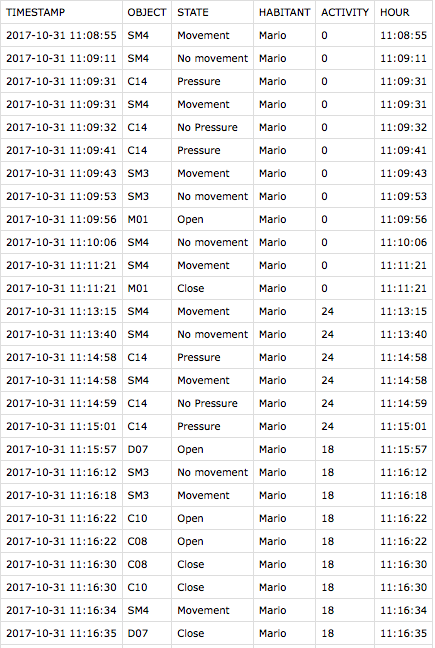First you need to find a way to formulate this as a classification problem, where you have pairs of features (from your sensor data) and labels (the activity).
Bag of features
A simple way is to cut up the observations into a series of time-windows, where inside each window you ignore the temporal parts of your sensor data (a "bag of features" representation). Keep track of the current (or most common) state of each sensor, and count the number of sensor transitions that happened (ex: C08open->close: 2 times).
To select the appropriate length of time-window you should do some Exploratory Data Analysis to find typical activity durations.
Both during training and prediction, the time-windows should be computed with overlap.
Say that each window is 5 minutes long. Then the next window contains the 4 last minutes, plus 1 new minute of data. Overlap is usually in a range of 50-90%.
Note that some activities are quite time-dependent. Like make dinner or make lunch. So you should include also a feature time_of_day which is seconds/minutes since midnight.
Temporal models
Some transitions between activities are probably much more common that others, and this is a source of information that can be used. Example: making dinner -> having dinner probably way more likely than making breakfast -> making dinner.
A Hidden Markov Model (HMM) would be the standard way to model that. It can give you the most probable sequence of activities for a whole day.
There are some ways to use CNNs and RNNs on these kinds of datasets, but unless the dataset is huge I would probably not try that.

